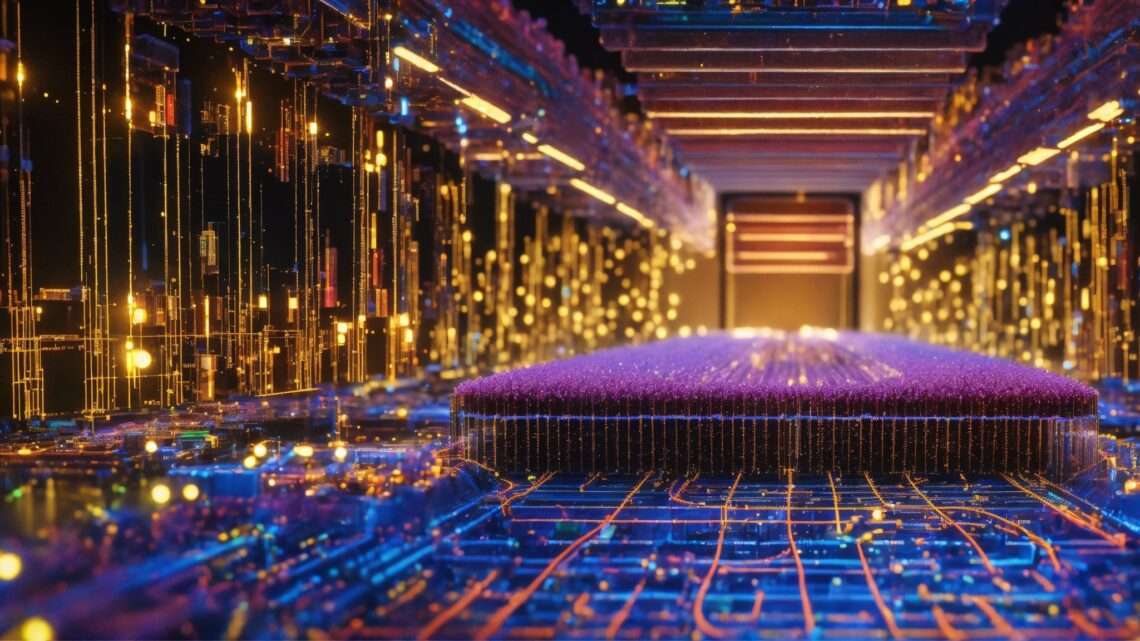
Generative Adversarial Networks (GANs) in Science and Biology: Advancing Image Manipulation and Data Augmentation
February 15, 2024Introduction to Generative Adversarial Networks (GANs)
Generative Adversarial Networks (GANs) are a class of machine learning models designed to generate new data samples that resemble a given dataset. The basic idea behind GANs is to have two neural networks, a generator and a discriminator, that are trained simultaneously through adversarial training.
Definition and Basics of GANs:
- GANs were introduced by Ian Goodfellow and his colleagues in 2014.
- The generator generates fake data samples, such as images, while the discriminator tries to distinguish between real and fake samples.
- The objective of the generator is to generate samples that are indistinguishable from real data, while the discriminator aims to correctly classify real and fake samples.
Overview of GAN Architecture and Training Process:
- The generator takes random noise as input and generates fake samples.
- The discriminator takes both real and fake samples as input and predicts whether each sample is real or fake.
- During training, the generator and discriminator are trained alternately. The generator tries to fool the discriminator, while the discriminator tries to improve its ability to distinguish between real and fake samples.
Importance of GANs in Image Generation and Manipulation:
- GANs have been used in various applications, including image generation, image editing, and style transfer.
- In image generation, GANs can generate realistic images of faces, animals, and other objects.
- In image manipulation, GANs can be used to change the attributes of an image, such as its color or style.
GANs have shown remarkable results in generating high-quality and realistic images, and they continue to be an active area of research in the field of machine learning and computer vision.
Applications of GANs in Image Manipulation:
1. Deepfake Technology:
- GANs are used in deepfake technology to create realistic synthetic images and videos by swapping faces or altering expressions and actions.
- While deepfake technology has raised concerns about misinformation and privacy, it also has potential applications in entertainment and special effects.
2. Artistic Style Transfer:
- GANs can be used for artistic style transfer, where the style of one image is applied to another image, creating visually appealing and artistic results.
- This technique has been used to create new artwork, transform photographs, and enhance visual content in various applications.
3. Super-Resolution Imaging:
- GANs are employed in super-resolution imaging to enhance image quality and resolution by generating high-resolution images from low-resolution inputs.
- This technology has applications in medical imaging, satellite imaging, and enhancing the quality of digital photographs.
Overall, GANs have revolutionized image manipulation by enabling realistic synthetic content creation, artistic transformations, and enhancement of image quality and resolution.
GANs in Data Augmentation:
1. Synthetic Data Generation:
- GANs can be used to generate synthetic data that closely resembles real data, helping to create diverse training datasets.
- This synthetic data can be used to augment existing datasets, especially in scenarios where collecting large amounts of real data is challenging or expensive.
2. Augmenting Limited Data for Machine Learning Models:
- GANs can augment limited datasets by generating additional samples that capture the underlying distribution of the data.
- This augmentation can improve the performance of machine learning models, especially in tasks where a large amount of data is required for training.
3. Improving Model Robustness and Generalization:
- By providing a more diverse set of training examples, GANs can help improve the robustness and generalization of machine learning models.
- Models trained on augmented data are often more resilient to noise and variations in the input data, leading to better performance on unseen data.
Overall, GANs play a crucial role in data augmentation by generating synthetic data, augmenting limited datasets, and improving the robustness and generalization of machine learning models.
Advanced GAN Techniques:
1. Conditional GANs (cGANs):
- cGANs are an extension of GANs where both the generator and discriminator are conditioned on additional information, such as class labels or specific attributes.
- This conditioning allows for the generation of images based on specific conditions, such as generating images of different classes or with specific attributes.
2. Progressive GANs:
- Progressive GANs are designed to incrementally increase the resolution of generated images during training.
- This approach starts with low-resolution images and progressively adds details, resulting in high-quality images with realistic details.
3. StyleGAN:
- StyleGAN is a GAN variant that allows for the generation of high-quality and realistic images with fine-grained control over the style and appearance of the generated images.
- StyleGAN uses a style-based generator architecture to separate the latent space into style and content, enabling the generation of diverse and high-resolution images.
These advanced GAN techniques have pushed the boundaries of image generation and manipulation, enabling the creation of highly realistic and detailed images with fine-grained control over their appearance.
GANs in Biological Image Analysis:
1. Enhancing Microscopy Images for Biomedical Research:
- GANs can be used to enhance the quality of microscopy images by generating high-resolution and noise-free images.
- This can aid researchers in obtaining clearer images for better analysis and interpretation in various fields such as cell biology and pathology.
2. Generating Synthetic Biological Images for Training Deep Learning Models:
- GANs can generate synthetic biological images that closely resemble real biological samples, providing a diverse dataset for training deep learning models.
- This approach can help overcome limitations in dataset size and diversity, improving the performance of models in tasks such as image classification and segmentation.
3. GANs for Image-Based Phenotyping and Disease Diagnosis:
- GANs can be used for image-based phenotyping, where the characteristics of biological samples are analyzed based on their images.
- In disease diagnosis, GANs can generate synthetic images representing different disease states, helping to train models for accurate diagnosis based on image features.
Overall, GANs have the potential to revolutionize biological image analysis by enhancing image quality, providing diverse datasets for training, and improving the accuracy of image-based phenotyping and disease diagnosis.
Challenges and Considerations:
1. Ethical Implications of GANs in Image Manipulation and Synthesis:
- GANs raise ethical concerns regarding the creation of realistic fake images that can be used for deceptive or malicious purposes, such as creating deepfake videos.
- There is a need to establish guidelines and regulations to ensure the ethical use of GANs in image manipulation and synthesis.
2. Addressing Bias and Fairness Issues in GAN-Generated Data:
- GANs may inherit biases present in the training data, leading to biased or unfair outcomes, especially in applications such as disease diagnosis.
- Methods to detect and mitigate bias in GAN-generated data are essential to ensure fair and unbiased results.
3. Ensuring Data Privacy and Security in GAN Applications:
- GANs trained on sensitive or personal data raise concerns about data privacy and security.
- Measures such as data anonymization and encryption should be implemented to protect privacy and prevent unauthorized access to sensitive information.
These challenges highlight the importance of responsible use and development of GANs in biological image analysis, emphasizing the need for ethical guidelines, bias mitigation strategies, and data protection measures.
Case Studies and Examples:
1. Generating Synthetic Medical Images:
- GANs have been used to generate synthetic medical images, such as MRI scans and histopathology images, for training deep learning models.
- This approach can help overcome the limitations of dataset size and variability in medical image analysis.
2. Simulating Biological Processes:
- GANs have been used to simulate biological processes, such as protein folding and molecular interactions, providing insights into complex biological systems.
- This can aid researchers in understanding fundamental biological mechanisms and designing novel therapies.
3. Drug Discovery and Design:
- GANs have been applied in drug discovery and design to generate novel molecular structures with desired properties.
- By generating virtual compounds, GANs can accelerate the drug discovery process and reduce the cost of developing new drugs.
4. Image-Based Phenotyping and Disease Diagnosis:
- GANs have been used for image-based phenotyping and disease diagnosis in various fields, such as pathology and dermatology.
- By generating synthetic images representing different disease states, GANs can help train models for accurate diagnosis and treatment planning.
Impact of GANs in Advancing Research and Data Analysis:
1. Enhanced Data Generation and Augmentation:
- GANs have revolutionized data generation and augmentation in research fields where data scarcity is a challenge.
- By generating synthetic data that closely resembles real data, GANs have enabled researchers to train more robust and accurate models.
2. Improved Image Analysis and Interpretation:
- GANs have improved the quality of images in various scientific disciplines, such as astronomy and microscopy.
- By enhancing image quality, GANs have facilitated better analysis and interpretation of complex data, leading to new discoveries and insights.
3. Accelerated Drug Discovery and Development:
- GANs have accelerated the drug discovery and development process by generating virtual compounds and predicting their properties.
- This has led to the discovery of new drug candidates and the optimization of existing drugs, saving time and resources in the drug development pipeline.
Overall, GANs have had a profound impact on science and biology, enabling new research possibilities, advancing data analysis techniques, and accelerating discoveries in various fields.
Future Directions in GAN Research:
1. Advancements in GAN Architectures and Training Methods:
- Researchers are exploring new GAN architectures and training methods to improve the stability, convergence speed, and quality of generated images.
- Techniques such as progressive growing, self-attention mechanisms, and spectral normalization are being investigated to enhance GAN performance.
2. Integration of GANs with Other AI Techniques for Enhanced Image Analysis:
- GANs are being integrated with other AI techniques, such as reinforcement learning and meta-learning, to improve image analysis tasks.
- This integration allows for more robust and efficient image analysis, particularly in medical imaging and scientific research.
3. Potential Applications of GANs in Personalized Medicine and Drug Discovery:
- GANs have the potential to revolutionize personalized medicine by generating patient-specific models and treatment plans based on medical imaging and genetic data.
- In drug discovery, GANs can be used to design custom drugs tailored to individual patients or to predict drug response based on genetic and molecular data.
These advancements and applications of GANs hold great promise for the future of image analysis, personalized medicine, and drug discovery, paving the way for innovative solutions in healthcare and beyond.
Conclusion:
Recap of Key Points:
- GANs are a powerful class of AI algorithms that can generate realistic images and data.
- In science and biology, GANs are used for image manipulation, data augmentation, and simulating biological processes.
- They have applications in medical imaging, drug discovery, and disease diagnosis.
Potential of GANs in Transforming Image Manipulation and Data Augmentation:
- GANs have the potential to revolutionize image manipulation and data augmentation by generating high-quality synthetic data.
- They can improve the accuracy and efficiency of machine learning models trained on limited datasets.
Call to Action for Continued Research and Ethical Use of GAN Technology:
- Continued research is needed to improve GAN architectures, training methods, and applications in science and biology.
- Ethical considerations, such as data privacy, bias, and fairness, must be addressed in the development and deployment of GANs.
In conclusion, GANs have immense potential to transform image manipulation and data augmentation in science and biology. However, ethical considerations must be carefully considered to ensure the responsible use of this technology.

















